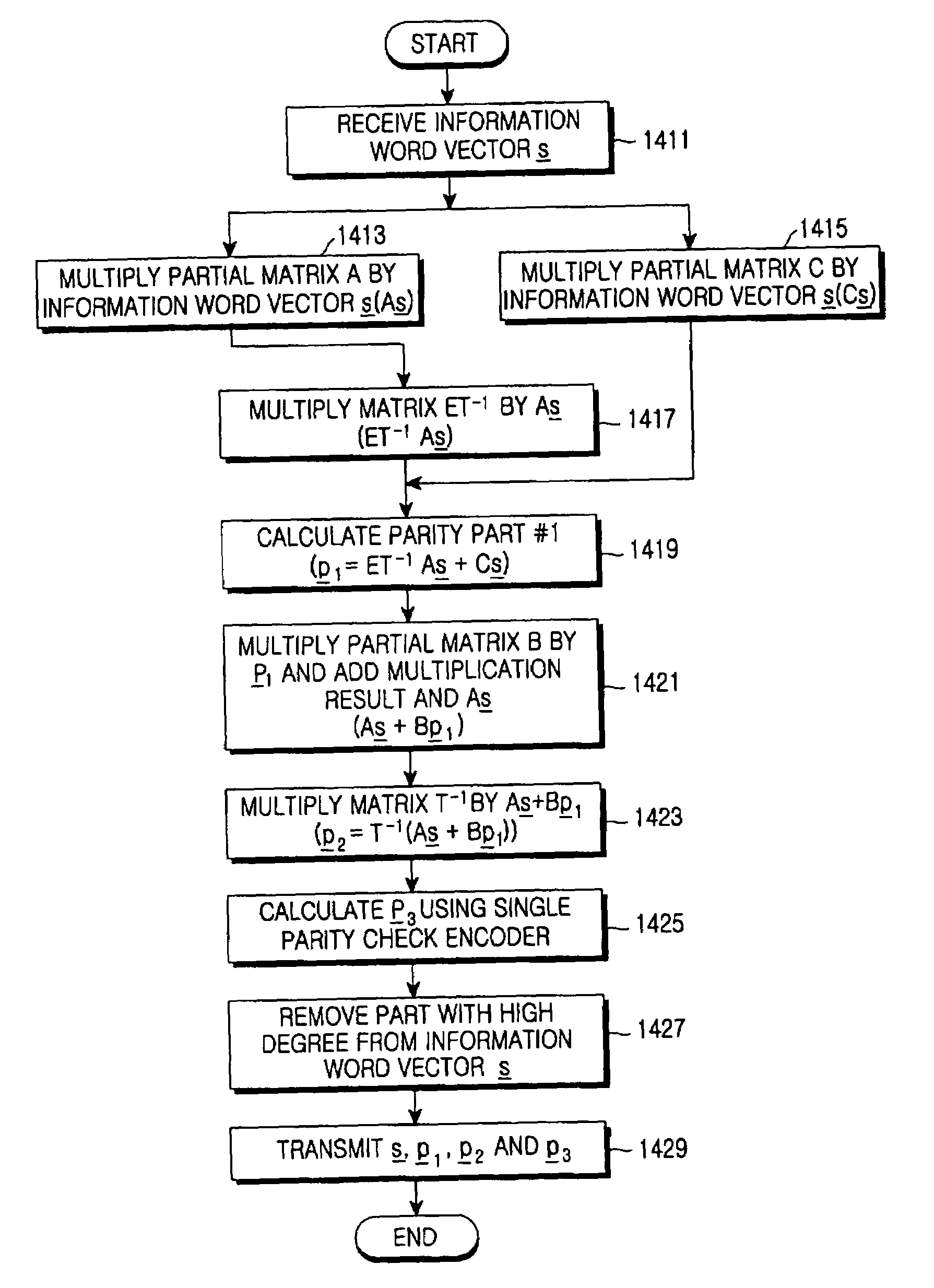Apparatus and method for coding and decoding semi-systematic block low density parity check codes
a semi-systematic block, low density parity check technology, applied in the field of mobile communication system, can solve the problems of inability to implement the decoding method, lack of detailed channel coding and decoding methods supporting a data rate, and inability to store and store information, etc., and achieve the effect of complex coding
- Summary
- Abstract
- Description
- Claims
- Application Information
AI Technical Summary
Benefits of technology
Problems solved by technology
Method used
Image
Examples
Embodiment Construction
[0096]Preferred embodiments of the present invention will now be described in detail herein below with reference to the annexed drawings. In the following description, a detailed description of known functions and configurations incorporated herein has been omitted for conciseness.
[0097]The present invention proposes an apparatus and method for coding and decoding a semi-systematic block Low Density Parity Check (LDPC) code. In particular, the present invention proposes an apparatus and method for coding and decoding a semi-systematic block LDPC code in which single parity check codes are concatenated. That is, the present invention proposes an apparatus and method for coding and decoding a semi-systematic block LDPC code in which a length of a minimum cycle in a factor graph of a block LDPC code is maximized, coding complexity of the block LDPC code is minimized, and real-time coding is possible.
[0098]Although not separately illustrated in the specification, the novel coding and de...
PUM
 Login to View More
Login to View More Abstract
Description
Claims
Application Information
 Login to View More
Login to View More - R&D
- Intellectual Property
- Life Sciences
- Materials
- Tech Scout
- Unparalleled Data Quality
- Higher Quality Content
- 60% Fewer Hallucinations
Browse by: Latest US Patents, China's latest patents, Technical Efficacy Thesaurus, Application Domain, Technology Topic, Popular Technical Reports.
© 2025 PatSnap. All rights reserved.Legal|Privacy policy|Modern Slavery Act Transparency Statement|Sitemap|About US| Contact US: help@patsnap.com



